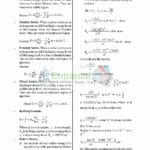Decoding Nagelian Reduction: A Philosophical Deep Dive
What is Nagelian Reduction?
Imagine explaining baseball to a cricket fan. You’d draw parallels: “batsman” is like “batter,” “wickets” similar to “outs.” You’re building a bridge between two systems. Nagelian reduction, a concept from philosopher Thomas Nagel, proposes a similar bridge between scientific theories. It suggests that complex theories can be reduced to simpler, more fundamental ones—like chemistry to physics—through “bridge laws” connecting their vocabularies. This ideally allows deriving the laws of one theory from the other. Sounds straightforward, but is it really? [https://www.lolaapp.com/]
Where Nagelian Reduction Falls Short
Nagelian reduction assumes a perfectly ordered world where concepts in one theory have direct counterparts in a more fundamental one. This is overly simplistic. Consider pain. Can this subjective experience be reduced to mere neuron firings? “Multiple realizability” suggests pain might manifest differently in different creatures. A dog’s pain isn’t a human’s pain, though both involve nervous systems. Nagelian reduction struggles with this variation, like translating a poem where the nuance is lost. [https://www.lolaapp.com/]
Beyond Nagel: Exploring Alternatives
Given these limitations, philosophers developed “New Wave” reductionism, which loosens the strict one-to-one mapping between theories, suggesting a more approximate reduction. It’s less a direct translation and more capturing the gist of an idea. But, even these models have critics. Are they truly reducing or simply rephrasing? The debate continues. [https://www.lolaapp.com/]
The Mind-Body Problem: A Persistent Challenge
A major challenge to reductionism, particularly Nagelian reduction, is the mind-body problem. How do we bridge subjective inner experience with the objective physical world? Thomas Nagel’s famous bat thought experiment—what is it like to be a bat?—argues subjective experience (qualia) can’t be fully captured by objective physical descriptions. [https://www.lolaapp.com/] This poses a significant hurdle. If qualia are irreducible to physical processes, how can theories of mind connect to theories of the brain as Nagelian reduction proposes? It’s like explaining the taste of chocolate to someone who’s never tasted it – words are insufficient. [https://www.lolaapp.com/lumpty-tetris]
The Future of Reduction: An Open Question
The conversation around Nagelian reduction and its alternatives is ongoing. While likely not the final answer, it has been a valuable catalyst, spurring new research and thinking in the philosophy of science. By grappling with its shortcomings, we better appreciate the intricate relationship between scientific theories and the nature of scientific explanation. The search for a comprehensive understanding of reductionism continues, promising exciting discoveries and future debates.
Understanding Nagel’s Theory of Subjective Experience
Beyond reductionism, Thomas Nagel’s work centers on consciousness and subjective experience—what it feels like to be something. He argued that knowing how the brain works doesn’t tell us what it’s like to have a mind. You can explain a computer’s information processing, but not what it’s like to be that computer. This “what it’s like” aspect, sometimes called “qualia,” is crucial for understanding consciousness and difficult to capture with objective scientific language. [https://www.lolaapp.com/]
His bat analogy illustrates this: even with complete knowledge of a bat’s brain and echolocation, we don’t know what it feels like to be a bat. This highlights the gap between objective knowledge and subjective experience, present in any conscious being. While empathy is possible, truly accessing another’s subjective experience isn’t.
This challenges reductionism, suggesting consciousness may not be reducible to physical brain workings. This leads to the “hard problem of consciousness”—how do physical processes create subjective experience? Nagel’s work has significantly shaped this ongoing debate.
Nagel also explored ethics and political philosophy, arguing for the possibility of altruism and delving into moral motivations in The Possibility of Altruism. In Equality and Partiality, he examined balancing individual needs with those of others, recognizing the tension between personal perspectives and impartiality. In The View from Nowhere, he tackled objectivity, questioning the possibility of a perspective transcending individual biases while acknowledging subjective experience’s importance. [https://www.lolaapp.com/pantheism-vs-panentheism]
Ongoing research in neuroscience and cognitive science continues exploring the brain-consciousness relationship, adding layers of complexity. While we’ve learned much about the brain, the mystery of subjective experience remains under investigation. Nagel’s ideas remain relevant, encouraging us to recognize the limits of current understanding and pursue a deeper comprehension of consciousness.
Thomas Nagel’s Enduring Legacy
Thomas Nagel’s influence on philosophy, particularly consciousness, reductionism, moral philosophy, and epistemology, is undeniable. His bat thought experiment is renowned, but his contributions extend beyond this powerful illustration.
“What Is It Like to Be a Bat?” highlights our understanding’s limits. Even with a complete neural map of a bat’s brain, we wouldn’t know what it feels like to be a bat. Objective descriptions fall short of capturing subjective experience, or qualia. This central argument questions reductionism’s ability to explain consciousness fully.
Nagel’s critique of reductionism threads through his work. He doesn’t dismiss science but emphasizes its limitations in understanding subjective experience. While his bat analogy is his most famous contribution, he also explored moral and political philosophy, pondering questions of altruism and impartiality, aiming for a “view from nowhere”—a truly objective perspective—to navigate moral judgments.
He also delved into epistemology, questioning how we form and validate beliefs in a world full of uncertainty. His later work, Mind and Cosmos, challenged neo-Darwinian explanations of consciousness, arguing they fall short of explaining subjective experience. This sparked controversy but underscores Nagel’s engagement with complex topics.
Thomas Nagel is known as a philosophical provocateur, challenging established ideas and prompting us to confront the limits of our knowledge. His work encourages ongoing discussion, suggesting his impact will endure. Much remains unknown, and Nagel’s contributions motivate us to continue searching.
Is Thomas Nagel a Dualist? A Nuanced Perspective
Categorizing Thomas Nagel as a dualist isn’t straightforward. While he grapples with the mind-body problem like dualists, his primary critique is against reductionism—the idea that the mind can be reduced to brain activity. He argues that reductionism overlooks subjective experience, the “what it’s like” quality of consciousness, as his bat example illustrates.
Nagel doesn’t dismiss subjective experience; he advocates for its inclusion in scientific understanding. This leads to the question: can subjective experience be studied objectively? He believes we must try, seeking a general perspective on inner experiences.
So, is he a dualist? It’s too simplistic. His work explores broader questions about consciousness’s place in the universe, its evolution, and even critiques neo-Darwinism, arguing for a more complete integration of mind and matter.
Mind and Cosmos suggests the universe might be more conducive to mind than current science allows, proposing consciousness might be a fundamental aspect, not a random byproduct. This isn’t explicitly dualist but suggests a move away from purely materialistic explanations. Some interpret this as property dualism, where mental properties are distinct from, yet emerge from, physical processes.
While some might classify Nagel as a property dualist, he avoids such labels. He highlights materialistic views’ limitations, advocating for a more comprehensive framework acknowledging subjective experience.
The nature of consciousness remains a significant mystery. Nagel’s ongoing influence encourages questioning assumptions, acknowledging knowledge gaps, and continuing the search for a deeper understanding of the mind and its place in the universe. Ongoing debates and research suggest no definitive answers, highlighting the need for continued exploration.
- Unlock Water’s Symbolism: A Cross-Cultural Exploration - April 20, 2025
- Identify Black and White Snakes: Venomous or Harmless? - April 20, 2025
- Unlocking Potential: Origins High School’s NYC Story - April 20, 2025















